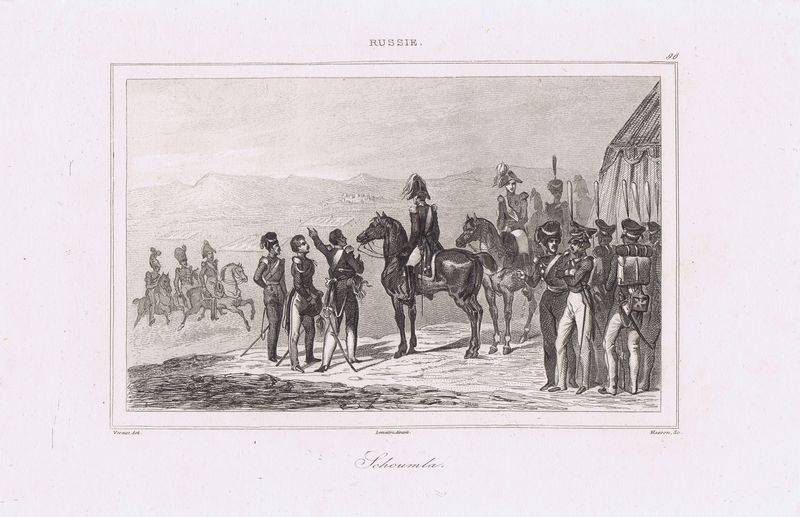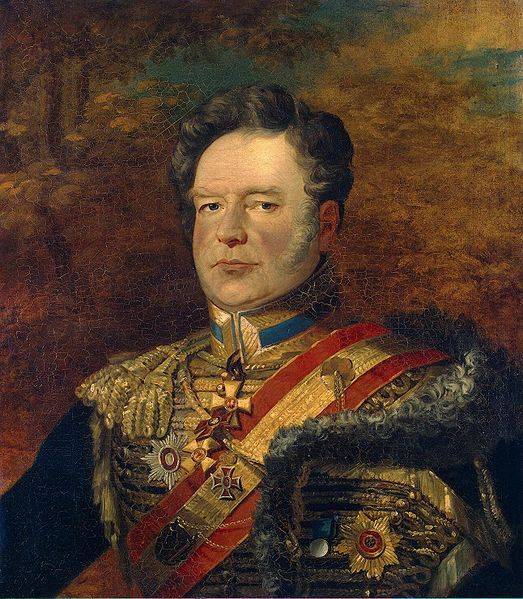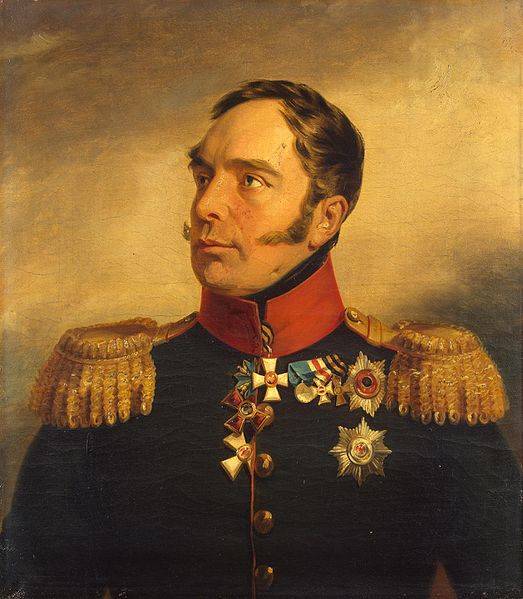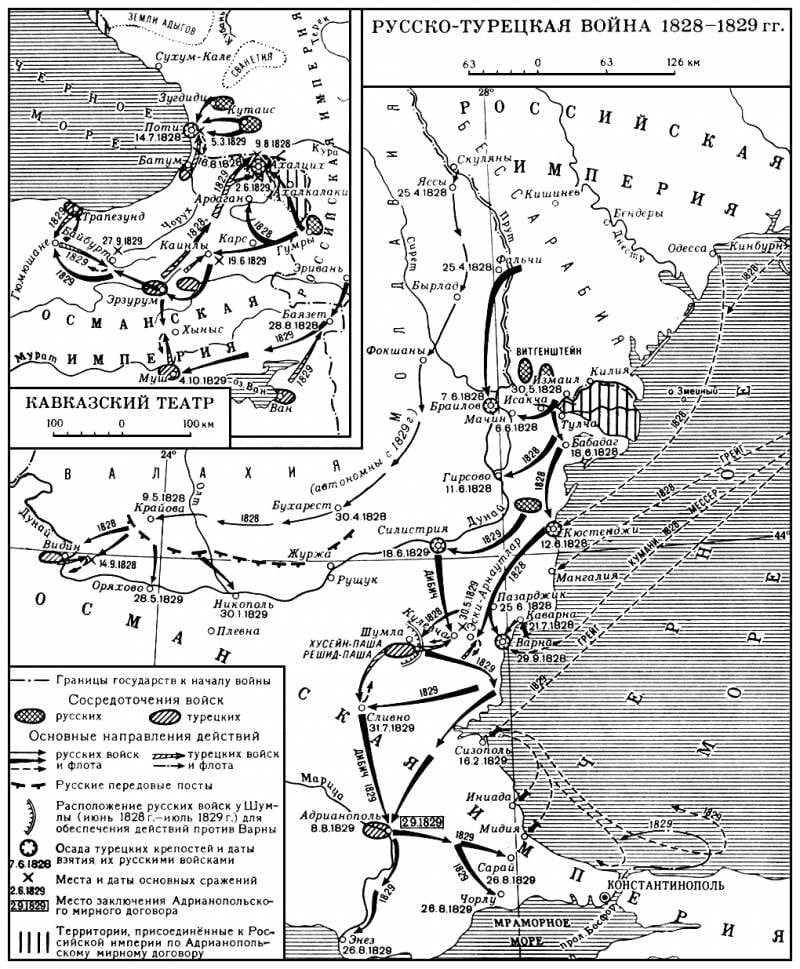Zabalkan campaign of the Russian army. How Dibich brought Turkey to its knees
The Russian army defeated the Turks in the battles of Aidos and Slivno. 8 August Dibich troops captured Adrianople. The advance of the advanced Russian units to the approaches to Constantinople demoralized the Ottoman military-political leadership. Turkey has requested peace.

Unexpected Dibich Maneuver
The defeat of the Turkish army under the leadership of Vizier Reshid Pasha in the battle of Kulevchen (Kulevchinskoye battle. How Dibich paved the way for the Russian army through the Balkans) radically changed the situation in the Danube theater in favor of the Russian army. Part of the Ottoman army fled through the Balkans, the other - to their homes. The vizier himself was able to lead part of the troops to Shumla. The defeat of the popular commander in Turkey Reshid Pasha demoralized Turkish garrisons in the Balkans. The powerful Turkish fortress on the Danube - Silistria, which Russian troops besieged from the beginning of May 1829, and suffered greatly from the action of artillery, without receiving assistance from the Vizier, capitulated. The Turks lost about 15 thousand people - half were killed and wounded, the rest surrendered.
After the victory at Kulevi, the main forces of the Russian army moved to Shumla, the main Turkish fortress base. Russian commander Ivan Ivanovich Dibich showed the enemy that he would besiege Shumla. It was an expected move. The Grand Vizier immediately reinforced the garrison of the fortress with fresh troops, and withdrew troops from other sectors. This led to the fact that the defense of the Black Sea coast and mountain passes through the Balkans was significantly weakened. Russian intelligence quickly discovered this. In addition, Dibich knew that the Ottoman command believed that a small Russian army could not break through the impassable Balkan mountains. To organize such a campaign, the Russians need to take Shumla and concentrate a large army.
Then Dibich made his famous maneuver, took a risk. Zabalkansky campaign could put a winning point in the war. 6, 7 and 2 corps were sent to participate in the march, 37 thousand people in total (30 thousand infantry and 7 thousand cavalry) with 147 guns. For such a strategic operation it was not enough. In addition, the Turkish army remained in Shumla, which could attack the Russian rear. Continuing to mislead the enemy, Dibich ordered General Krasovsky, with the 3 Corps, who was freed after the capture of Silistra, to go to Shumla.
The beginning of the Zabalkan campaign. The defeat of the Ottomans on the river Kamchik
The hike began at the beginning of July 1829. Dibich divided the troops into three columns: right, left and reserve (she went behind the left), which went along two roads. In the right column (7 Corps) under the command of Reediger were 14 infantry battalions, 3 Cossack regiment, 3 companies of pioneers (sappers) with 14 pontoons and 44 guns. The left column (6 body), approximately equal to the forces on the right, commanded by General Roth. The reserve column (2 Corps) was commanded by Count Palen. It consisted of 19 infantry battalions, 8 cavalry squadrons, Cossack 2 regiments and 60 guns. The forces of Palen could both strengthen the troops in front, and become a barrier if the Turks attack from the rear, from Shumla.
Thus, Dibich was able to outwit the enemy. While Krasovsky was advancing to Shumla, detachments of Ridiger, Rota, and Palena headed for the Kamchik River (Kamchia) along the routes planned earlier. All movements of the Russian troops were carried out at night, and the Turks in Shumla did not immediately notice the changes in the Russian camp. Leaving parts immediately replaced with new ones. This allowed us to win several transitions, while the Turkish commander-in-chief guessed about the enemy’s true plans. Turkish intelligence could not in time reveal the essence of Russian movements.
From the Turkish army Dibich covered Krasovsky's corps. He was ordered not to leave the fortress on Yanibazar. Krasovsky left 5 July from Šumly and stayed with Devno. Krasovsky took a comfortable position at Yanibazar. In Shumla, incomprehensible Russian maneuvers were discovered and alarmed, after all they were waiting for a siege. The Grand Vizier sent a strong cavalry detachment from the fortress for reconnaissance. However, the Ottomans were stopped by Russian cavalry under the command of Prince Madatov. The Turks accepted Krasovsky’s forces as the vanguard of the Russian army and retreated. Reshid Pasha calmed down for a while, believing that the Russians had retreated from Šumly, because they were not ready to storm such a strong fortress.
Meanwhile, the Ridiger and Rota columns, somewhat detained by heavy rains that blurred the roads, reached the Kamchik River on July 6. This river covered the approaches to the Balkan Mountains. The Turkish garrisons, which occupied the field fortifications at the crossings, were taken by surprise. The Ottomans believed that the Russians were busy with the Shumly siege. Ridiger's troops immediately set up a pontoon ferry at Keproköy and forced the river. Russian companies with a quick attack took the field fortifications of the enemy. The Turks, demoralized by the unexpected appearance of the Russians, barely resisted and fled to Keprikoy, leaving behind the banner and the 4 guns.
Column Roth faced with great difficulties. She went to the river near the village of Dervish-Dzhevan. Here, the Turks had a strong fortification of thousands of garrisons and 18 guns. The right bank, where the Ottomans settled, was high, which gave the Turks an advantage. In order to avoid unnecessary losses and loss of time, the Russian general decided to bypass the enemy. For an exchange of fire with the Turks, a battery of 16 guns was left (because of the terrain’s difficulty, 11 guns were able to be installed), which was covered by huntsmen. Having installed the guns, the Russian artillerymen opened fire. Artillery duel lasted all day. While there was a firefight, Major General Velyaminov from the 16 Infantry Division and part of the 7 Infantry Division made a detour to the right to the village of Dulgardu. Pontoons delivered here through difficult terrain with great difficulty. Under shelling of the enemy, entrenched on the other side of the trenches, Russian sappers erected ferries at night. On July 7, under the cover of the 12-gun artillery battery, the Russian forces crossed the river. General Velyaminov personally led the Murom and Yakut infantry and the 32 th jäger regiments. The Turks did not accept the battle and fled. Then the Russian troops moved to Dervish-Dzhevan. There was no road, so I had to pave the way through the forest.
Turkish fugitives warned the garrison in Dervish-Dzhevan and the Ottomans lined up for battle. Russian troops came out of the forest by assault columns and went into a bayonet attack. The Turks could not stand it and fled to their fortified camp. At this time, Russian huntsmen and Cossacks waded across the river and rushed to the Turks in the camp. A bloody hand-to-hand fight ensued. Caught under a double blow, the Turks were completely demoralized and ran. At the same time they managed to save part of the guns. Thus, the Russian troops defeated the troops of two Turkish generals Ali Pasha and Yusuf Pasha. Russian trophies were 6 banners, 6 guns, all camp stocks. Turkish casualties were about 1 thousand killed and prisoners of 300. Russian losses - 300 people.

Overcoming the Balkan Mountains
Having completed the successful crossing of the Kamchik River, the Russian troops continued their rapid movement. Soon they entered the Balkan Mountains, which were considered insurmountable for the troops. The climb to the mountain pass was very difficult. For the 6-hour transition, the entire 10 versts passed. Russian soldiers, in fact, had to build a mountain road themselves: chopping disturbing trees, dragging their side, breaking stumps with picks, knocking down, clearing or destroying stones, tearing off or spilling the ground. Only after that it was possible to transport tools, charging boxes, light carts. Already at the very beginning of the journey, heavy carts had to be thrown. Soldiers now had to carry on themselves more ammunition, food, various military equipment. And all this in hot weather. Not surprisingly, many threw crackers, fell from fatigue and caught up with their already at night. Scorching heat and lack of good water caused a high incidence. The composition of our army declined every day.
Russian troops overcame three parallel ranges of the Small Balkans in 5 days. The Turks did not expect this, so they could not provide decent resistance. During the offensive, our troops captured 3 thousand prisoners and 50 guns. On July 12, the Russians captured the coastal city of Burgas. In the Gulf of Burgas there were already ships of the Black Sea fleet. A similar route was not chosen by chance. Dibich used the fact that the Russian fleet dominated the sea. The Turks had a weak fleet and did not dare to fight for sea routes. As a result, the Russian army was in the rear of the coastal fortress of Varna and could count on the support of the fleet. Dibich was provided with supplies by sea. In addition, the Russians landed in February and seized Sisipol (a port south of Burgas), which became the supply base for Russian troops in Bulgaria.
Thus, the Russian army in 11 days passed about 150 km, overcoming difficult, unfamiliar mountains. The Russian rush for the Balkans took the Ottoman command by surprise. The Turks lost two major frontiers on the way to the internal regions of the Ottoman Empire - the Danube and the Balkans. Major hostilities from the northeastern borders of the empire were moved beyond the Balkans. Earlier in Constantinople, they felt calm behind the mighty shield of the Balkan Mountains. The unexpected appearance of the Russians had a strong psychological effect on the Turks. Further hostilities also developed rapidly and adversely for Ports. Without a fight, they surrendered to the corps of General Roth of the fortress of Messemvria and Ahiolo.

Further offensive of the Russian army. The defeat of the Turkish army in Aidos
The grand vizier Reshid Pasha, pulling up troops from Ruschuka, sent two corps for Dibich along different roads: 15-thousand. Khalil Pasha's detachment to Sliven and 12 thsd. Ibrahim Pasha's detachment to Aidos (Aytos). Krasovsky, did not pay enough attention to the control of the area to the south and south-west of Shumla, and could not prevent the movement of enemy troops. The Turkish command hoped to strengthen the local garrisons and stop the march of the Russian army to Adrianople. Thus, Dibich was able to crush the enemy troops in parts.
13 July 1829, the battle took place at Aidos, which was attacked by Ridiger’s corps. The Russian general from the defectors and prisoners knew that the enemy unit had superiority in forces. However, I decided to attack until the Aydos garrison received new reinforcements from Šumla. The Cossack hundreds, who followed in the vanguard of Ridiger’s column, were attacked on the outskirts of the city by the numerous Turkish cavalry Ibrahim Pasha. The Cossacks, not accepting the battle, retreated, luring the enemy to their four equestrian guns. The Turkish cavalry, fascinated by the pursuit, came under the gunfire of the Don gun crews. The Turks mixed up, tried to retreat. At this time, they were attacked by the 2-I brigade of the 4-th Uhlan division, which followed the Don Cossacks. For the lancers followed and rebuilt Cossack hundreds.
The Ottomans suffered heavy losses and fell back under the protection of their artillery. Ibrahim Pasha restored order in his troops and several times threw the cavalry into the attack, trying to use numerical superiority and crush the Russian cavalry until the approach of our infantry and main artillery. However, the Turks could not overturn and destroy our advanced forces. When the main forces of Ridiger approached Aydos, the situation radically changed in our favor. Russian artillery immediately turned around and opened fire. The terrain was convenient - the valley and the road leading to the city. Turkish cavalry could not stand it and ran for the position of their infantry, which was entrenched at the heights of the city. But here the Turks were covered with artillery fire. Meanwhile, the Russian troops began to bypass the enemy from the flanks. Turkish troops fled through the city. Russian on the shoulders of the enemy broke into Aydos and occupied the city. The battle was not there. The Turks fled. The victory was complete. Turkish troops lost up to 1 thousand people only killed, more than 200 people were captured. Russian trophies were 4 banner and 4 guns.
Going further, the Russian commander-in-chief actively used light cavalry - hussar, lancer and Cossacks. Russian cavalry detachments appeared in the most unexpected places, inducing fear and panic on the enemy. Great help in this matter was provided by the local Bulgarians. Thus, a Cossack detachment under the command of Major General Zhirov seized the city of Karnabat with a bold touch without a fight, which was on the way of the army of Dibich.
On July 18, the forward detachment of Major General Sheremetev (2 Brigade of the 4 Division of the Ulan, hundreds of Cossacks and 4 equestrian guns) collided with Khalil Pasha’s corps near the town of Yambol. The oncoming battle began. At first, the Turks came under cartoonic fire, then the Russian cavalry attacked them. As a result, the troops of Khalil Pasha retreated, leaving their campsite. The Turks fled to the city of Yambol, but when the Russians approached, they fled. 21 July Russian avant-garde occupied Yambol. Here valuable trophies were captured - food supplies for the Ottoman army. They were used to supply the Dibic army.
In the rear of the Russian army, the grand vizier Reshid Pasha once again decided on a sally and left Shumla with large forces. However, the Turkish army was already demoralized by previous failures, so the numerical superiority of the Vizier’s forces over Krasovsky’s corps did not help. In a short fight the Russians defeated the enemy and pressed him against the mountains between Matcha fortifications and Trula. Part of the Ottoman army fled back to Shumla. Thousands of Turks fled through forests and mountains, deserted.
To be continued ...

Information